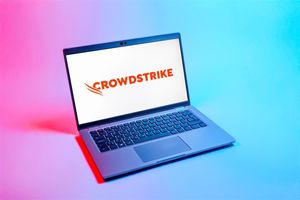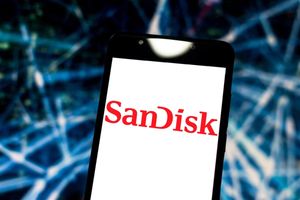-- Oral presentation at AAO 2022 suggests IGF-1 and its related pathways are extensively upregulated throughout all stages of TED --
Horizon Therapeutics plc (Nasdaq: HZNP) today announced the presentation of new data defining molecular patterns in TED and further implicating the role of insulin-like growth factor-1 (IGF-1) in patients with low CAS. These data were presented during the American Academy of Ophthalmology Annual Meeting (AAO 2022), Sept. 30 – Oct. 3 in Chicago.
TED is a progressive and potentially vision-threatening rare autoimmune disease, which has been historically characterized as biphasic: acute, which is traditionally believed to be patients with high CAS and earlier in their TED journey; and chronic, traditionally believed to be patients with low CAS and later in the course of their disease.1 This analysis reveals that in patients with both high and low CAS, there is clear activation of IGF-1 and related pathways, as well as the extracellular matrix (ECM) organization, a structural network that supports cellular processes.2
“By demonstrating that disease activity remains in patients with low CAS, this analysis may help explain why many patients who have lived with Thyroid Eye Disease for several years are still struggling with challenging symptoms that can be debilitating,” said Shoaib Ugradar, M.D., The Jules Stein Eye Institute at University of California, Los Angeles (UCLA). “It is important for physicians to be aware of the continued activation of IGF-1 throughout the course of the disease and its potential impact on treatment decisions.”
The study analyzed genome ribonucleic acid (RNA) sequencing and pathway analysis in orbital tissue from patients with a CAS of ≥ 3 and patients with a CAS ≤ 2, as well as five control subjects. Though high CAS patients are often distinguished by activation of immune system pathways, which remain largely unaffected in low CAS patients, IGF-1 and its related pathways were found to be upregulated in both stages of disease. Additional analysis suggests that IGF-1 activity plays a central role in linking immune and ECM pathways in people with TED.2
The upregulation of IGF-1 found in low CAS patients with extended disease duration is further supported by a growing body of evidence that outlines the impact of TED on people who have lived with it for several years.3 One assessment published in the journal Ophthalmology and Therapy in 2021 found that disease burden continues well into the chronic phase, affecting daily lives with appearance and persistent visual changes, increasing risk for anxiety and depression.4
“This study, which represents one of the first molecular analyses of the continuum of Thyroid Eye Disease, confirms this challenging disease may not simply subside after a few years of obvious symptoms,” said Jeffrey W. Sherman, M.D., FACP, executive vice president, chief medical officer, Horizon. “We are committed to pioneering research like this to better understand drivers of the evolution of this disease in order to better support patients living with Thyroid Eye Disease across the course of their lifetimes.”
About Thyroid Eye Disease (TED)
TED is a serious, progressive and potentially vision-threatening rare autoimmune disease.1 TED often occurs in people living with Graves’ disease, but is a distinct disease that is caused by autoantibodies activating an IGF-1R-mediated signaling complex on cells within the retro-orbital space.5,6 This leads to a cascade of negative effects, which may cause long-term, irreversible damage, including blindness. Early signs and symptoms of TED may include dry eyes and grittiness; redness, swelling and excessive tearing; eyelid retraction; proptosis; pressure and/or pain behind the eyes; and diplopia.7,8
About Horizon
Horizon is a global biotechnology company focused on the discovery, development and commercialization of medicines that address critical needs for people impacted by rare, autoimmune and severe inflammatory diseases. Our pipeline is purposeful: We apply scientific expertise and courage to bring clinically meaningful therapies to patients. We believe science and compassion must work together to transform lives. For more information on how we go to incredible lengths to impact lives, visit www.horizontherapeutics.com and follow us on Twitter, LinkedIn, Instagram and Facebook.
References
- Barrio-Barrio J, et al. Graves' Ophthalmopathy: VISA versus EUGOGO Classification, Assessment, and Management. Journal of Ophthalmopathy. 2015;2015:249125.
- Ugradar S, et al. Whole Genome Transcriptome Comparison of Acute and Chronic Thyroid Eye Disease: Emergence of a Molecular Signature. Oral presentation at: American Academy of Ophthalmology (AAO); 2022 Sept. 30- Oct. 1; Chicago, IL.
- Wang Y, et al. Inflammatory and non-inflammatory thyroid eye disease: comparison of disease signs, symptoms and quality of life in US patients. Endo Practice. 2022;28(9):842-846.
- Cockerham KP, et al. Quality of Life in Patients with Chronic Thyroid Eye Disease in the United States. Ophthalmol Ther. 2021;10(4):975-987.
- Weightman DR, et al. Autoantibodies to IGF-1 Binding Sites in Thyroid Associated Ophthalmopathy. Autoimmunity. 1993;16(4):251–257.
- Pritchard J, et al. Immunoglobulin Activation of T Cell Chemoattractant Expression in Fibroblasts from Patients with Graves’ Disease Is Mediated Through the Insulin-Like Growth Factor 1 Receptor Pathway. J Immunol. 2003;170:6348-6354.
- Bartalena L, Kahaly GJ, Baldeschi L, et al. The 2021 European Group on Graves’ Orbitopathy (EUGOGO) Clinical Practice Guidelines for the Medical Management of Graves’ Orbitopathy. Eur J Endocrinol. 2021;185:G43-G67.
- McKeag D, et al. Clinical features of dysthyroid optic neuropathy: a European Group on Graves' Orbitopathy (EUGOGO) survey. Br J Ophthalmol. 2007;91:455-458.
View source version on businesswire.com: https://www.businesswire.com/news/home/20221002005046/en/
Contacts
Investors:
Tina Ventura
Senior Vice President, Chief Investor Relations Officer
Investor-relations@horizontherapeutics.com
U.S. Media:
Rachel Vann
Senior Director, Product Communications
media@horizontherapeutics.com
Ireland Media:
Gordon MRM
Ray Gordon
ray@gordonmrm.ie






